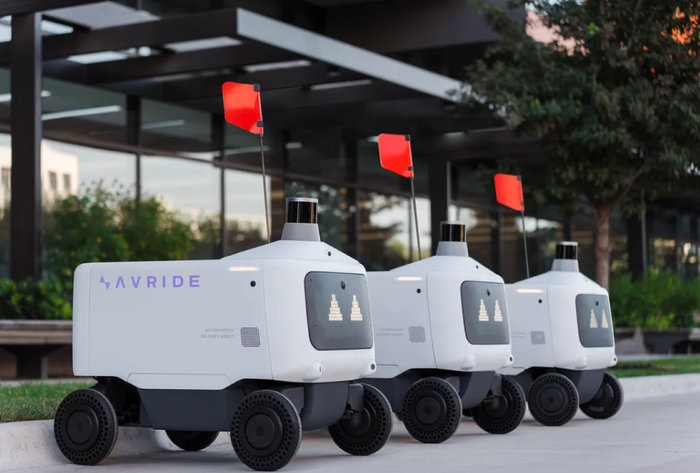Predictive Maintenance and Predicting Industrial Revolutions
Predictive maintenance can be tricky, but it is certainly simpler than predicting the next industrial revolution.
April 18, 2019

How transformational is artificial intelligence? That seemingly simple question can be tricky to answer.
First of all, the term often has a nebulous meaning. Oftentimes, the term is shorthand for “artificial general intelligence” or “strong AI.” In this theoretical construct, non-organic intelligence has the ability to reason and carry out an array of tasks. It is also this kind of AI Hollywood has referenced in films like “The Terminator,” as well as the variety that elicits dystopian fears in the likes of Elon Musk and Bill Gates. But the question of when such a form of AI will exist is impossible to decidedly answer. Gartner reasons it will probably be decades before researchers create machines capable of approximating human reasoning, even though machines trained at narrow tasks can outshine humans in intellectual games such as chess and, more recently Go. Martin Ford, author of “Architects of Intelligence: The truth about AI from the people building it,” said most experts believe strong AI is a decidedly unpredictable thing.
So are, it seems, industrial revolutions. While concepts such as Industrie 4.0 broadly hint that the convergence of AI, IIoT and other technologies could foment the next industrial revolution, productivity in Western nations has been sluggish for decades. U.S. industrial production for factories, mines and utilities dipped 0.1% in March, which, as the WSJ put it, “reinforces the view that manufacturing has hit a soft patch.”
But while the industrial macrocosm, measured by various productivity indices, putters along, there are a growing number of success stories emerging from industrial companies embracing IIoT technologies in tandem with machine learning. The startup FogHorn, for instance, helped the Japanese industrial electronics company Daihen eliminate 1,800 hours’ worth of manual data entry in a single factory. And a top beverage company saved the equivalent of 1 million cans of beer through predictive maintenance in one fell swoop. The firm installed machine monitoring technology from the firm Augury, which marries wireless vibration, ultrasonic, temperature and magnetic sensors with machine learning to detect machine problems for a range of industrial machines, including those used by breweries. “And we detected severe bearing wear on a filler — the machine that fills cans with beer,” said Saar Yoskovitz, co-founder and chief executive officer at Augury. “The discovery enabled the brewery to address the problem during planned downtime. “Because they are a 24-by-7 facility, they don’t have any room for unplanned downtime,” Yoskovitz said. But the bearing problem could have ultimately triggered a failure that resulted in eight hours of lost productivity. “That translates to 1 million cans of beer and $200,000 in revenue,” Yoskovitz added.
Alizent, Air Liquide’s digital subsidiary, provides another example of the power of Industrie 4.0 technologies. Incorporating technology from OSIsoft, Air Liquide created a plant optimization platform known as SIO a few years ago. OSIsoft’s PI software serves as the embedded data engine for the platform, which enables data collection and refining for analytics. “Air achieved payback in three months with SIO and a 10x payback in year one,” wrote Michael Kanellos,
IoT analyst and senior manager of corporate communications at OSIsoft in an email. “They then moved to use it to manage factories in a lights-out (i.e. no employees) manner across France and Southeast Asia.” Following that, Air Liquide decided to spin off the digital group into the Alizent unit to serve both Air Liquide as well as other companies.
Another example of a company with a rapid digital transformation ROI is White House Utility District. One of the top water and sewer utilities in Tennessee, the organization cut water leaks from approximately 32% to 15%. The savings in water resulted in millions of dollars in savings as well. “But they also cut data management way back, saving $30,000 a year,” Kanellos said. “They postponed a new $15 million plant by 11 years. Community reputation went up. Credit rating agencies even raised their ratings.”
Mark Willnerd, chief executive officer and president of the industrial machine learning firm Toumetis, foresees a coming uptick in industrial productivity in the next five years. “Thanks to technologies like machine learning, we’re going to see a big improvement,” he said. “[We could see a return of] 1990s-type productivity gains,” Willnerd added, referring to the decade linked to rapid uptick in output.
Toumetis is working with an energy company with an oil field Willnerd expects could one day be one of the top producing sites in the world. One factor hampering the productivity of the site is the unreliability of the electrical submersible pumps, which can knock a well out of production. But if the subject matter experts keeping tabs on the company’s equipment is overseeing 1,500 wells and 100 different data signals, they can easily miss data indicating an imminent pump failure. “They don’t know which wells are going to fail when,” Willnerd said. “But if I can predict which ones are going to fail in a 14-day window, I can schedule repairs to maximize profit and production.”
But the process of applying machine learning — or the application of it in predictive maintenance — in the industrial realm is rarely simple. “The data can be inconsistent. You could have false readings from sensors. You could have missing data,” Willnerd added. “And there’s a lot of just cleaning the data before you can do analysis on it.”
Willnerd surmises that we are still at the infancy of applying machine learning to industrial applications.
A study from Bain & Co. titled “Beyond Proofs of Concept: Scaling the Industrial IoT” reaches similar conclusions after surveying 600 high-tech executives. IIoT in general and predictive maintenance, in particular, are often more challenging to deploy than expected — as is the prospect of extracting “valuable insights from the data” from IIoT projects. The report later concludes, however, that “industrial IoT remains a promising opportunity.”
One central challenge is that making sense of such data also requires a rare blend of domain-expertise and data-science savvy. To help bridge the gap, Toumetis hired industrial experts who have been working on data analytics since the late 1990s and early 2000s. “It’s still an art form,” Willnerd said. “You got to clearly understand what problem you’re trying to solve and what the business value associated with that is.”
Yoskovitz has a similar take. After touring an array of industrial facilities across the United States, he came to the conclusion that one of the most common challenges was finding talent. While much has been made about the difficulty of finding an expert in, say, industrial cybersecurity or industrial data science, the problem is larger. “Once, I went into a room to do training in our customer’s facilities. The average age was 55,” Yoskovitz recalled. “We had people there who were on the verge of retiring and the newcomers who were in their 20s. And you have a good 30 years between them.”
Much of the legacy manufacturing experience in the United States will disappear as elder industrial employees retire in the next five to 10 years. Meanwhile, industrial jobs are low on the list for younger employees. “Almost nobody who is a millennial or Gen Z wants to be a maintenance technician,” Yoskovitz said.
So while it may be too early to tell if broad technologies like IoT and AI will create an era of productivity rivaling the first industrial revolutions, or whether Industrie 4.0 will be something more like a software revision than a cyberphysical-system–driven revolution. For now, it is a more practical question to ask how such technologies can meet their most pressing needs — getting the right people (technicians) to the right place (a potentially failing machine) at the right time (before that machine breaks).
About the Author
You May Also Like






